If you like to go along to get along, I suggest you don’t become a libertarian. At least not if you follow politics or work in Washington.
Otherwise, you’re doomed to a life of endlessly pointing out that the emperor has no clothes. Here are three examples.
1. When almost every Republican and Democrat argued for a Keynesian-style stimulus in 2008, libertarians had the lonely job of explaining that you don’t get more growth by increasing the burden of government spending.
2. And when most Republicans and Democrats said we needed a TARP bailoutthat same year, it was libertarians who futilely argued that the “FDIC-resolution” approach was a far more sensible way of dealing with the government-created crisis.
3. More recently, there were a bunch of stories complaining that 2013 was a very unproductive year for Congress, and libertarians were among the few to state that we’re better off with fewer laws rather than more laws.
The same is true for “bipartisanship.” Almost every pundit, politician, and lobbyist in Washington will extol the virtues of bipartisanship. But what they really mean is that they want both Republicans and Democrats to join arms in a business-as-usual game.
Indeed, the standard libertarian joke is that you get bipartisanship when the Stupid Party and the Evil Party both agree on something. Needless to say, that often means laws that are both stupid and evil.
Which is a good description of Bush’s 2008 stimulus and the corrupt TARP legislation.
But since we’re at the end of the year, I don’t want to get overly depressed. So let’s share some cartoons that celebrate the Murray-Ryan budget, which is the most recent example of “bipartisanship.”
We’ll start with ones that have a Christmas theme.
The politicians were glad to escape the fiscal constraint of sequestration, but Lisa Benson is not overly impressed by their cooperative effort.
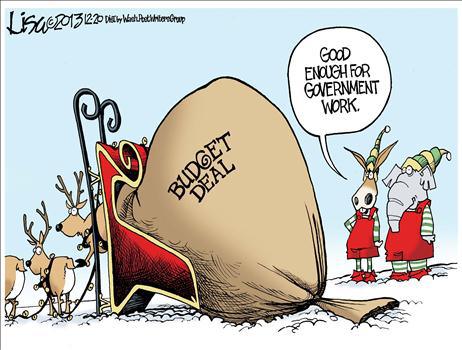
Gary Varvel isn’t very happy, either.
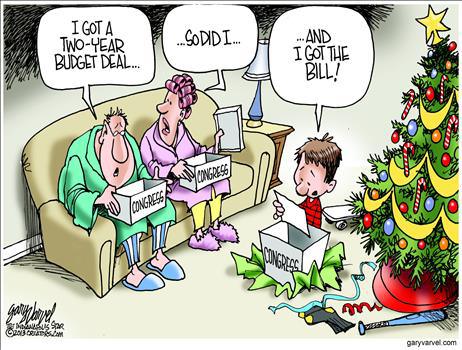
Varvel is very explicit in this cartoon about Democrats and Republicans being united against taxpayers.
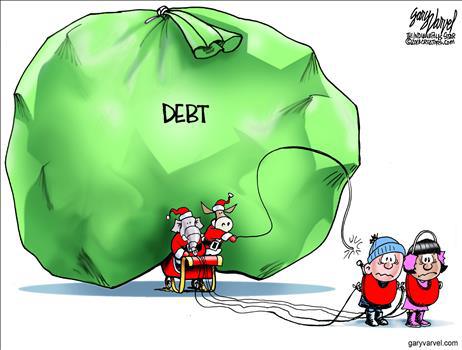
The bag should have been labelled “spending,” but that’s a minor complaint.
Steve Breen points out that the budget deal achieved three out of four goals.
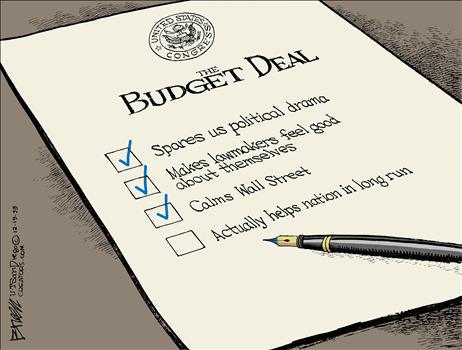
And Michael Ramirez astutely identifies too much spending as the problem and shows that the budget deal did nothing to address that issue.
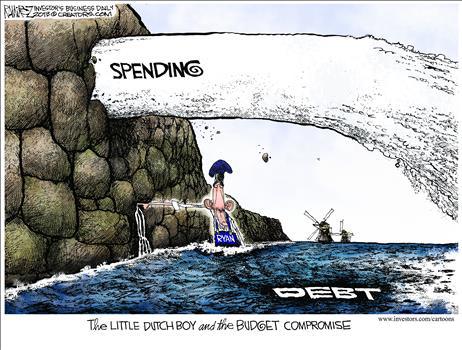
Here’s another Lisa Benson cartoon, though this one focuses on establishment GOPers trying to hook the Tea Party on the demon rum of big government.
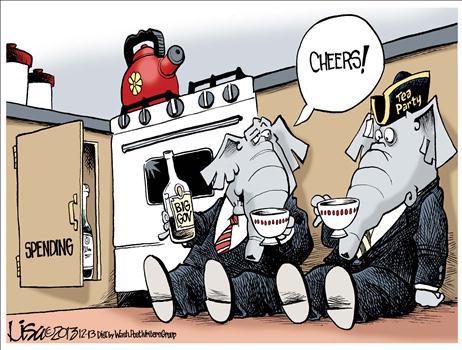
Sort of reminds me of this great Henry Payne cartoon about Obama and Greece. Or maybe this Nate Beeler cartoon about weak-willed GOPers.
I’ve saved the best for last.
This Glenn McCoy cartoon shows what bipartisanship really means inside the DC beltway.
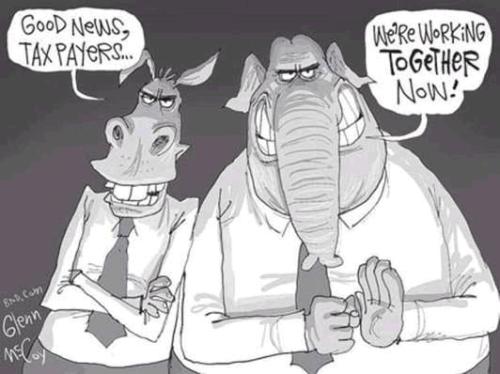
McCoy had another cartoon last year with a similar theme, as did Michael Ramirez.
In closing, I want to say something vaguely optimistic. The Murray-Ryan budget deal was unfortunate, but it was a rather minor setback compared to the kinds of “bipartisan” big-government schemes we got during the Bush years.
It was sort of akin to the fiscal cliff deal at the beginning of the year. Government got a bit bigger and a bit more expensive, but it was peanuts compared to TARP, the prescription drug entitlement, and many of the other schemes that eroded economic liberty last decade.
P.S. Fairness requires that I point out that bipartisanship doesn’t automatically mean bad legislation. The bipartisan 1997 budget deal between the GOP Congress and Bill Clinton cut some taxes and reduced the growth of federal spending. And the successful sequester came about because of the bipartisan 2011 debt limit legislation.

